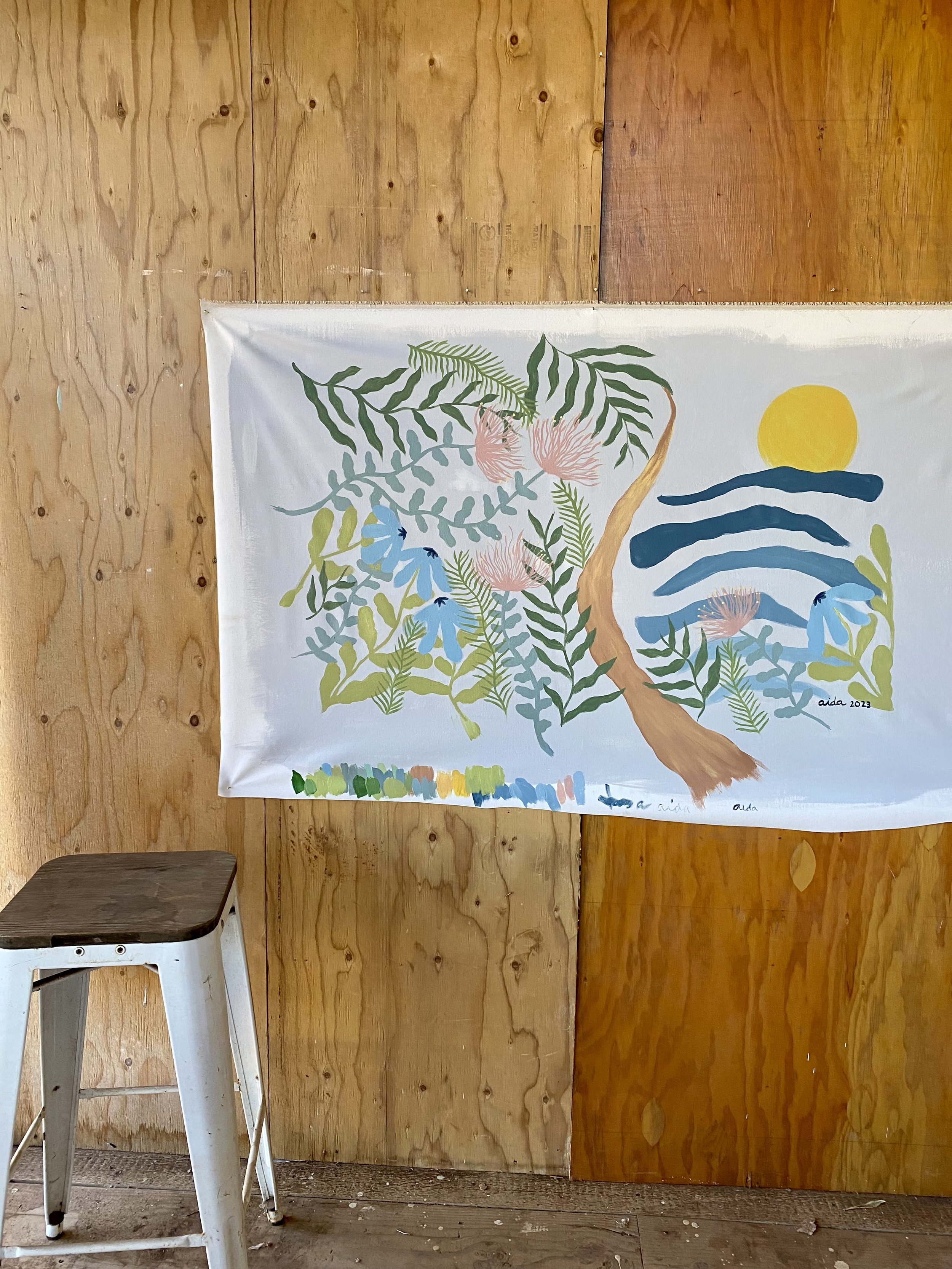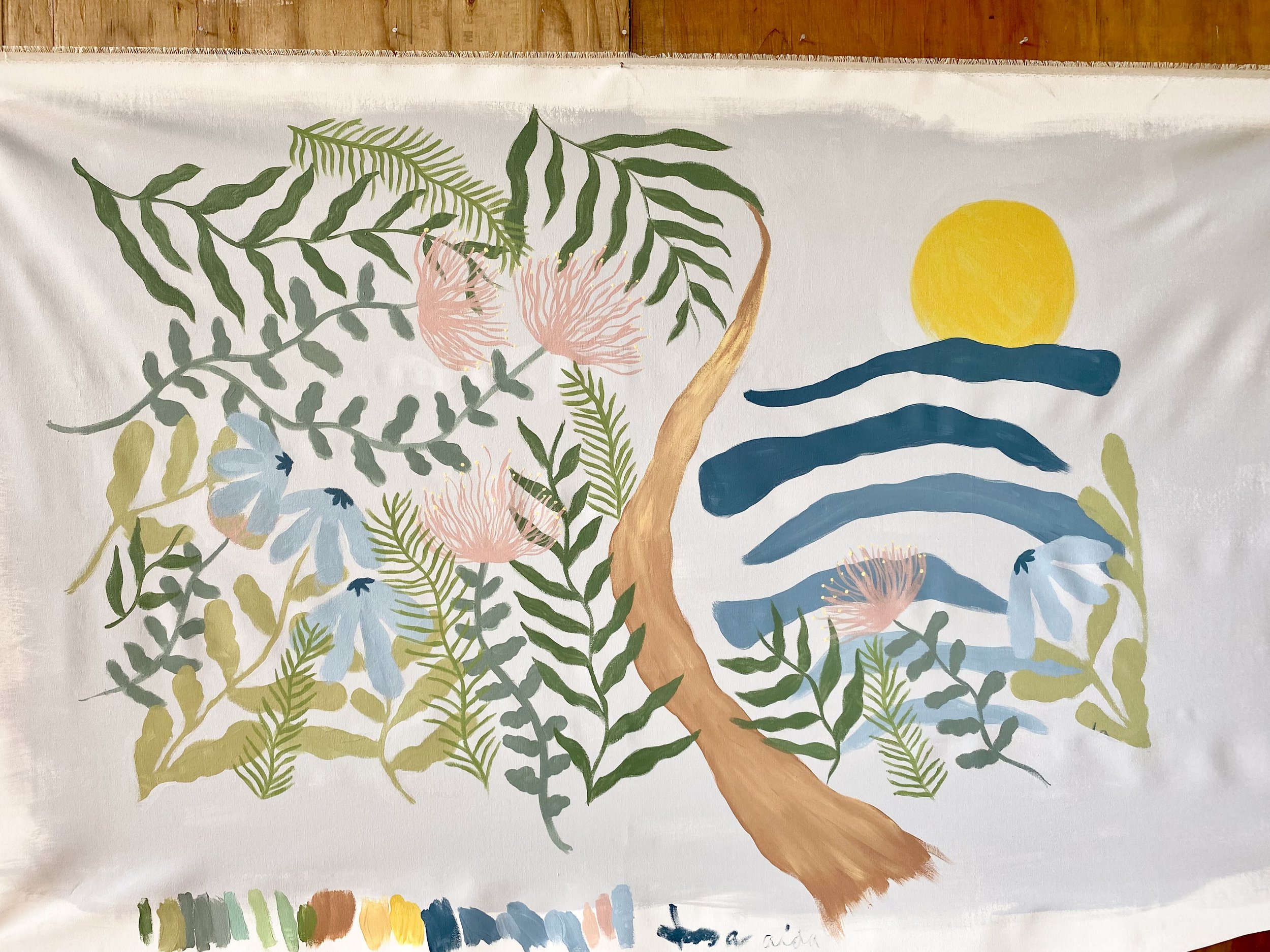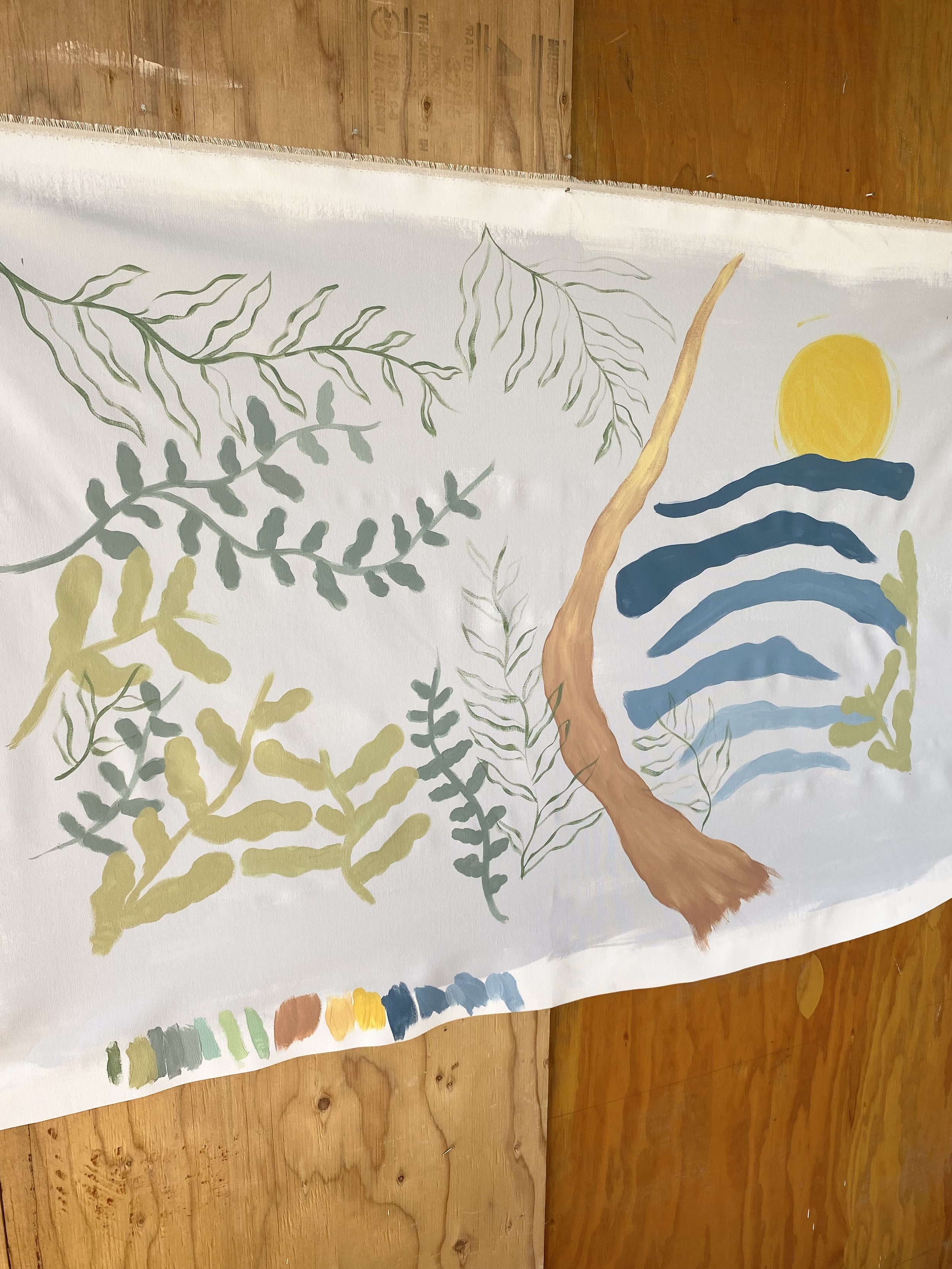Plants of Hanakapi’ai



Plants of Hanakapi’ai
Newly Weds Kelsey and Evan on the island of Kaua’i commissioned a painting based off the scenery from the Hanakapi’ai hike. I decided to use these 4 plants listed below due to their cultural and ecological significance. All information was used from Hui Ku Maoli Ola and the Hawaii State Government website. Mahalo and Enjoy!
Ohia Lehua
In Hawaiian mythology, Ohia and Lehua were two lovers. The Volcano Goddess Pele desired Ohia, but Ohia only had eyes for Lehua and rejected Pele’s advances. In a jealous fit, the fiery tempered Pele turned Ohia into a twisted tree. Heartbroken Lehua pleaded with the other gods to help her. Out of pity, the gods turned Lehua into a flower, which they placed on Ohia's tree forever uniting the two lovers. The legend remains today that it will rain when a Lehua is plucked from the tree, signifying the tears of the separated lovers.
Ohia Lehua is amongst the first plants to grow after a lava flow therefore is essential in soil development and ecological advancement. Unfortunately, there is a fungus causing Rapid Ohi’a Death that is wiping out the population of Ohi’a at a rapid rate. You can find out more information by searching Rapid Ohia Death.
Naupaka
One day, Naupaka was walking on the beach when she stumbled upon a young man standing in the water. They both had their eyes on each other and Naupaka knew it was love at first sight.
Naupaka asked Pele for permission to marry this man, but Pele decided that she wanted him for herself. When he rejected her because of his love for Naupaka, Pele went into a rage and chased the couple up into the mountains. Naupaka took the blossom from her hair and halved it to give one piece of herself to him. Pele and Naupaka’s other sisters felt pity on them. So they turned the young man into Mountain Naupaka and the Princess into Beach Naupaka.
On sandy beaches, the wind-breaking effect of naupaka traps sand at their roots, forming a mound. Over periods of time, the continuing sand deposits turn into sand dunes. Many of the coastlines that once were home to numerous sand dunes are now covered with ironwood trees that don’t encourage the formation of dunes. Instead, these plants that are planted as windbreaks invasively spread, preventing anything from growing under them.
Palapalai
Palapalai is a very important plant in Hawaiian culture, primarily for Hula. It is one of the plants Kapu (sacred) to Laka, the goddess of hula, it is also used to adorn the Hula altar and dancer as well and is highly sought after for making lei. Many songs and chants also refer to palapalai for its beauty and cultural importance.
Uluhe
Also known as false stag horn is a type of fern that can colonize volcanic regions. In ancient days, the fern was soaked in water and used to treat constipation.
All resources and references came from Hawaii.gov or Hui Ku Maoli Ola.
